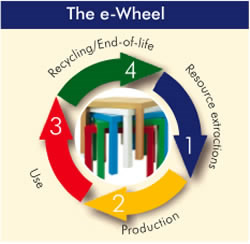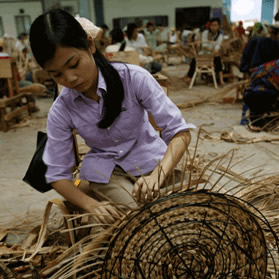The primary sector involves the development of the raw materials. IKEA is not a primary sector
organisation but it needs raw materials to develop its products. It therefore works closely with
primary sector
suppliers to
ensure a sustainable
impact on the people and the environment in
which it operates.
IKEA designs its own products.
Low price is one of the main factors that IKEA considers in
producing well designed, functional home furnishings available to everyone. At the design
stage, IKEA checks that products meet strict requirements for function, efficient distribution,
quality and impact on the environment.
IKEA buys products from more than 1,300 suppliers in 50 countries. It uses a number of
trading service offices across the world. They
negotiate prices with suppliers, check the quality
of materials and analyse the environmental impacts that
occur through the supply chain. They
also keep an eye on social and working
conditions at suppliers.
Environmental impact
IKEA uses a
tool - the ‘e-Wheel’ - to
evaluate the environmental impact of its products.
The e-Wheel
helps IKEA to analyse the four stages within the life
of a product. This also helps suppliers improve
their understanding of the environmental impact of
the products they are supplying.
Approximately 50% of IKEA’s 9,500 products
are made from wood or wood
fibres. This is a
good
resource as long as it comes from
sustainable
sources. It can be
recycled and is
a
renewable resource.
A key part of IKEA’s success is
due to its communications with materials’ suppliers and
manufacturers. During manufacturing IKEA
specifies to its producers that
waste should be
avoided. Where waste does occur IKEA
encourages suppliers to try to use it in the
manufacture of other products.
IKEA has a code of conduct called the IKEA Way of
Purchasing Home Furnishing Products (IWAY). This contains minimum rules and guidelines that help manufacturers to reduce the impact of their activities on the environment. The IWAY
code complies with international legislation.
A product in use should not have a
harmful effect upon consumers or their environment. For
example, it should not cause allergies. If it uses energy, it should do so efficiently. When a
product comes to the end of its useful life, it should be possible to
reclaim or recycle the materials
that make up the product. Such materials can then be re-used for making other products.
Supplier codes of conduct
IKEA creates many design
solutions to
minimise the use of materials. For example:
• some tables are made out of recycled plastic
• some
rugs are made of material
clippings that would otherwise be
wasted
• products such as water cans are designed to be
stacked - this means that more can be
transported in each
load, reducing the number of lorry journeys and therefore lowering
fuel costs.
Each of these ideas helps IKEA’s products to be more sustainable and reduce the impact on
the environment.
The primary sector - the development of the raw materials |



